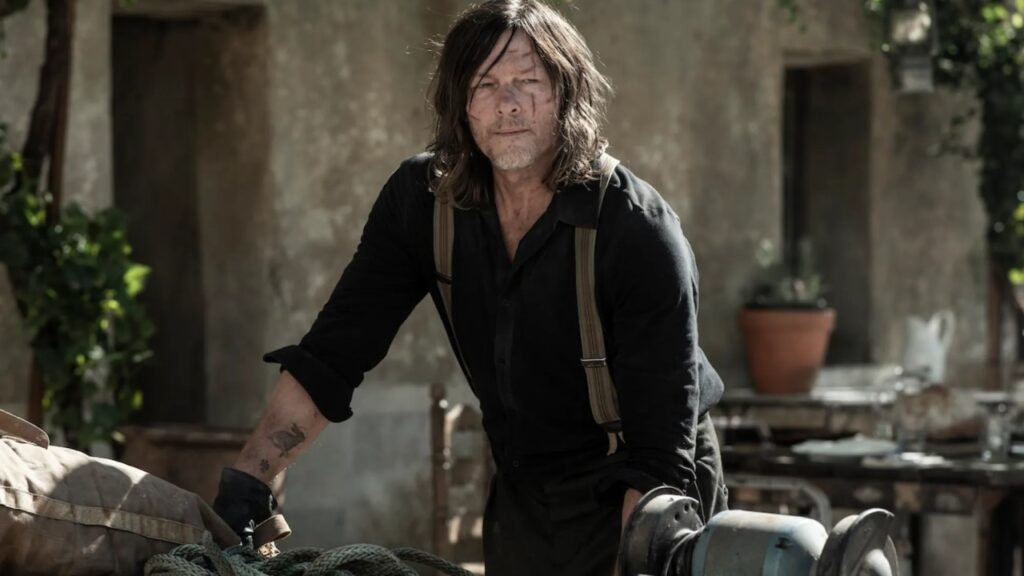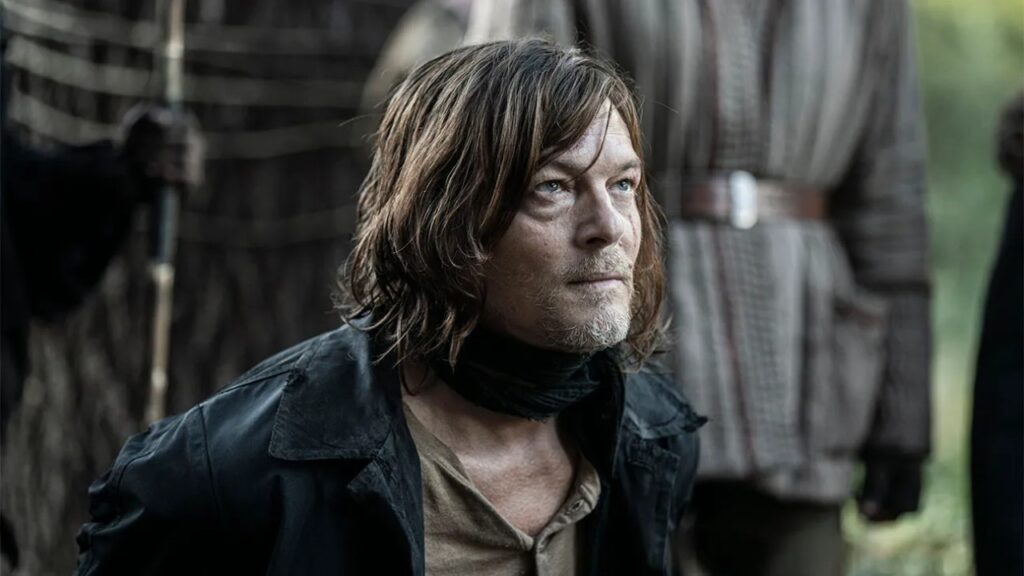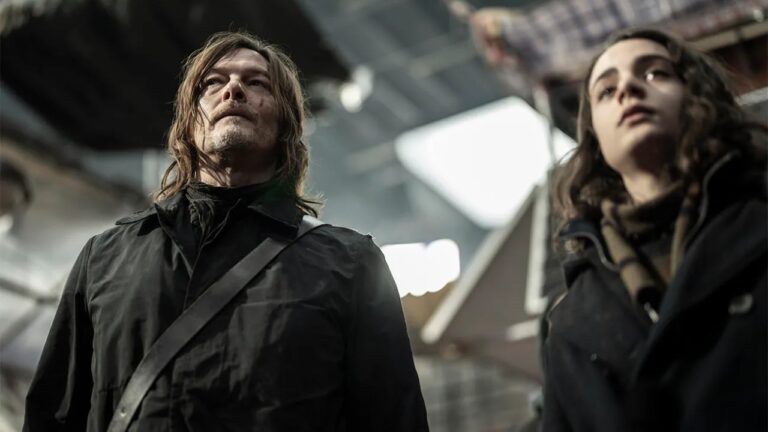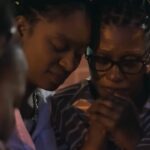Fifteen years into the sprawling Walking Dead universe, the apocalypse finally makes its way into global geography as the creators take us to London and deliver a vision that is as shocking as it is cinematic. The season 3 premiere of ‘The Walking Dead: Daryl Dixon‘ takes the series far beyond its familiar American landscapes and transports Daryl and Carol from Folkestone inland to a London, which is nearly wiped out clean of life. All the streets and landmarks lie in ruins, with jumpscares of punctuated and occasional undead walkers.
The devastation of London City in season 3 feels meticulously crafted, as if it were designed to highlight the extremes of survival in a densely populated urban environment, reminding us of the unsettling tension of Danny Boyle’s 2002 dystopian classic, 28 Days Later. But this time, this London becomes more than a landscape. Its emptiness amplifies the isolation of Julian Chamberlain, who is a self-proclaimed last Englishman, and his presence underscores the human toll of the outbreak. Julian’s character has depth, forcing Daryl, Carol, and us to confront both the psychological and physical challenges of navigating a world undone by the undead.
Isolation, Collapse, and the Fragile Ethics of Survival

Daniel Percival, the creator, portrays the ruined cityscape and emphasizes both scale and its consequences. London is said to be a metropolis of ten million, which is now reduced to silence, creating tension and showing us an emotionally devastating visual. While earlier seasons suggested the UK might have fared better against the virus, London’s desolation rewrites and disregards all the assumptions, showing us how quickly human systems can crumble under the dual pressures of infection and poor decision-making.
Season 3 also delves into themes of isolation and human choice. The sealed Channel Tunnel, which is intended to protect the UK, inadvertently magnifies the sense of confinement and desperation, which is one of the key driving forces portraying conflict and forcing survivors into complex moral decisions. The interplay between humans and walkers underscores the series’ exploration of survival ethics, demonstrating how rapidly societal norms can dissolve when survival is on the line.
Daryl and Carol Navigate a London Broken by Survival and Silence

Daryl and Carol’s journey through this transformed London offers a lens through which viewers can examine resilience, vulnerability, and the consequences of isolation. This narration captures the fragility of community and the challenge of navigating a city that now exists in the shadow of the undead. Familiar landmarks ravaged by the apocalypse heighten the stakes, making the devastation feel immediate, personal, and viscerally real.
By situating the story in London, season 3 expands the franchise’s geographical and narrative scope, emphasizing that the apocalypse is for all and on a global scale. Iconic London landmarks in ruins show us how survival, isolation, and the human condition tremble. As the new season of The Walking Dead unfolds, London’s role as a setting and character promises to add layers of tension, moral ambiguity, and visual spectacle, reminding us that even the most resilient societies can fall.




